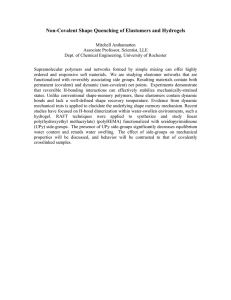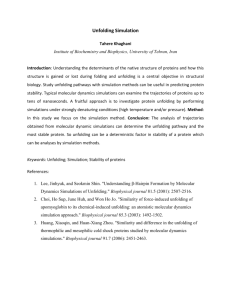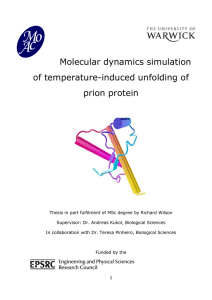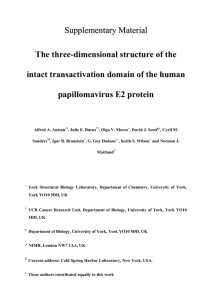Dynamics Of Protein Structure Network: From Equilibrium
advertisement
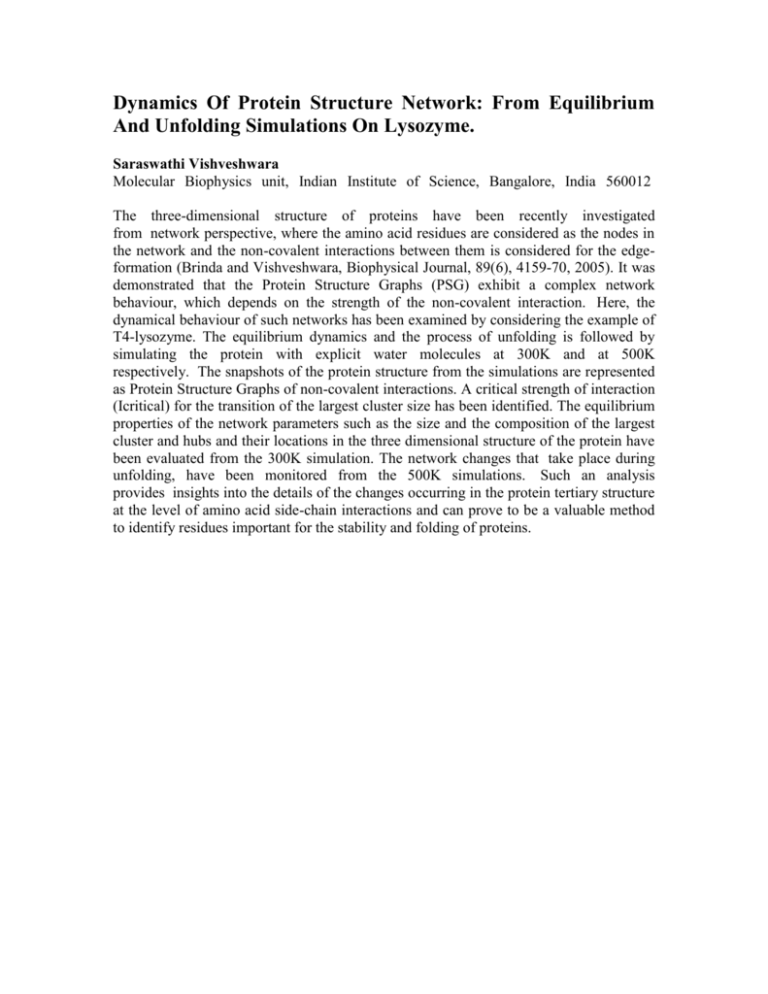
Dynamics Of Protein Structure Network: From Equilibrium And Unfolding Simulations On Lysozyme. Saraswathi Vishveshwara Molecular Biophysics unit, Indian Institute of Science, Bangalore, India 560012 The three-dimensional structure of proteins have been recently investigated from network perspective, where the amino acid residues are considered as the nodes in the network and the non-covalent interactions between them is considered for the edgeformation (Brinda and Vishveshwara, Biophysical Journal, 89(6), 4159-70, 2005). It was demonstrated that the Protein Structure Graphs (PSG) exhibit a complex network behaviour, which depends on the strength of the non-covalent interaction. Here, the dynamical behaviour of such networks has been examined by considering the example of T4-lysozyme. The equilibrium dynamics and the process of unfolding is followed by simulating the protein with explicit water molecules at 300K and at 500K respectively. The snapshots of the protein structure from the simulations are represented as Protein Structure Graphs of non-covalent interactions. A critical strength of interaction (Icritical) for the transition of the largest cluster size has been identified. The equilibrium properties of the network parameters such as the size and the composition of the largest cluster and hubs and their locations in the three dimensional structure of the protein have been evaluated from the 300K simulation. The network changes that take place during unfolding, have been monitored from the 500K simulations. Such an analysis provides insights into the details of the changes occurring in the protein tertiary structure at the level of amino acid side-chain interactions and can prove to be a valuable method to identify residues important for the stability and folding of proteins.



